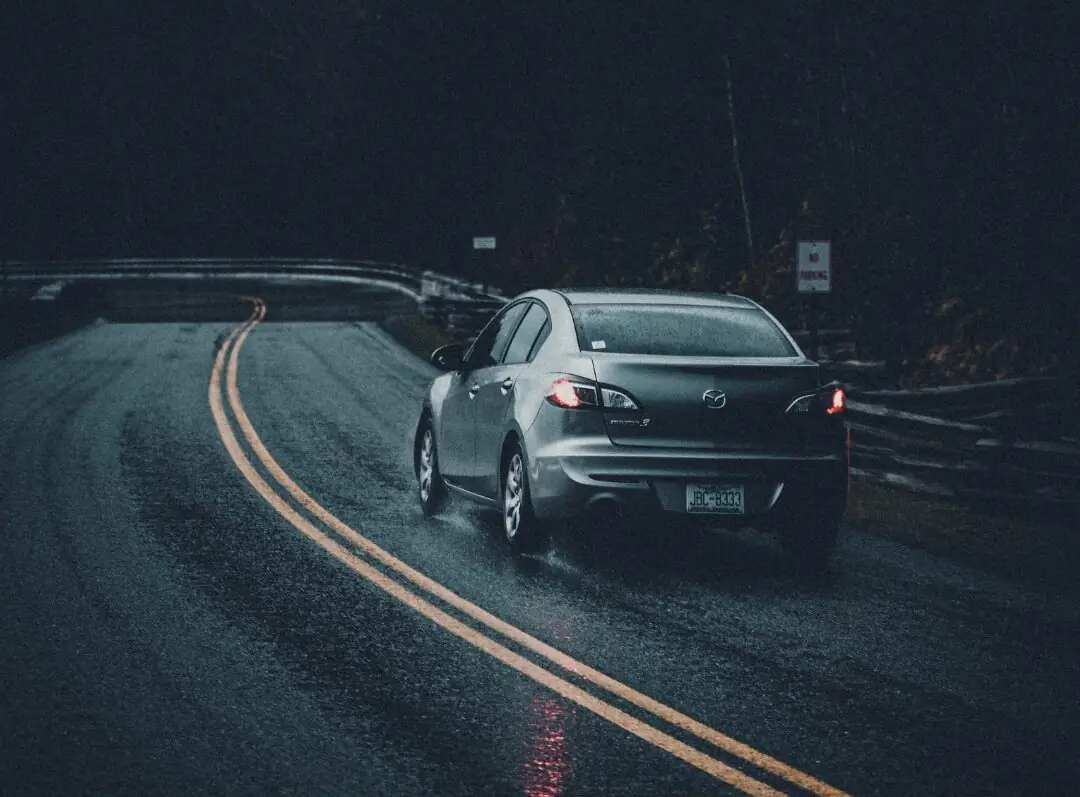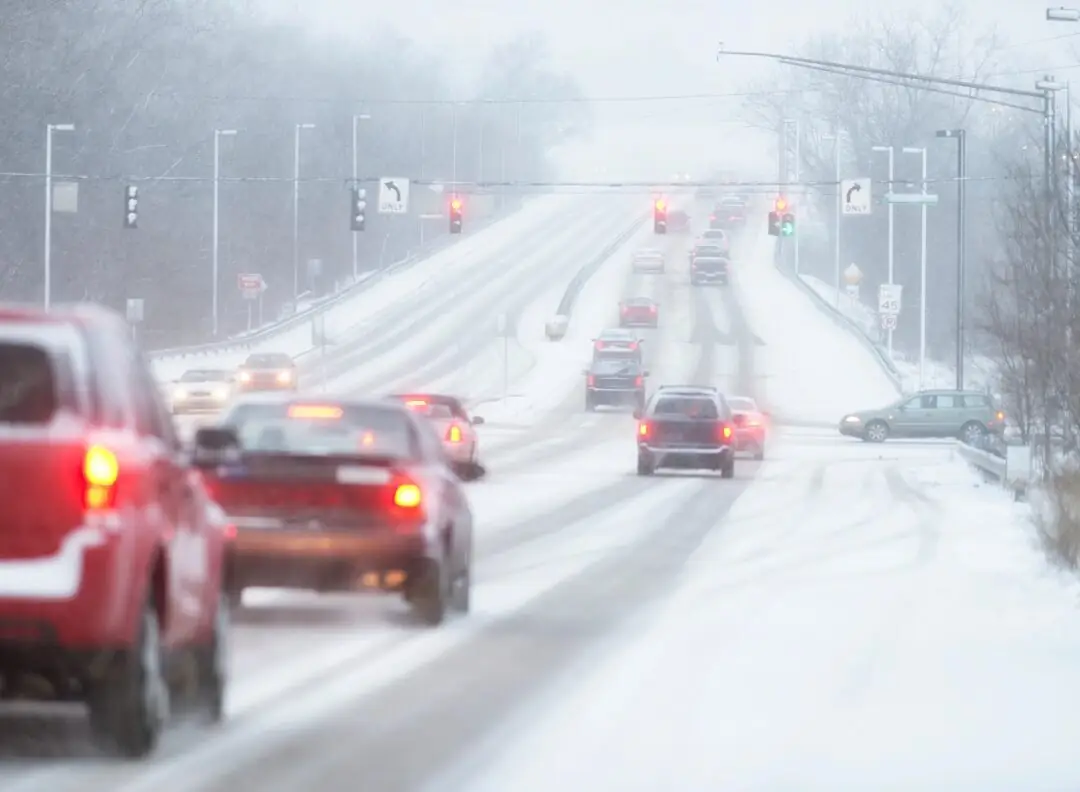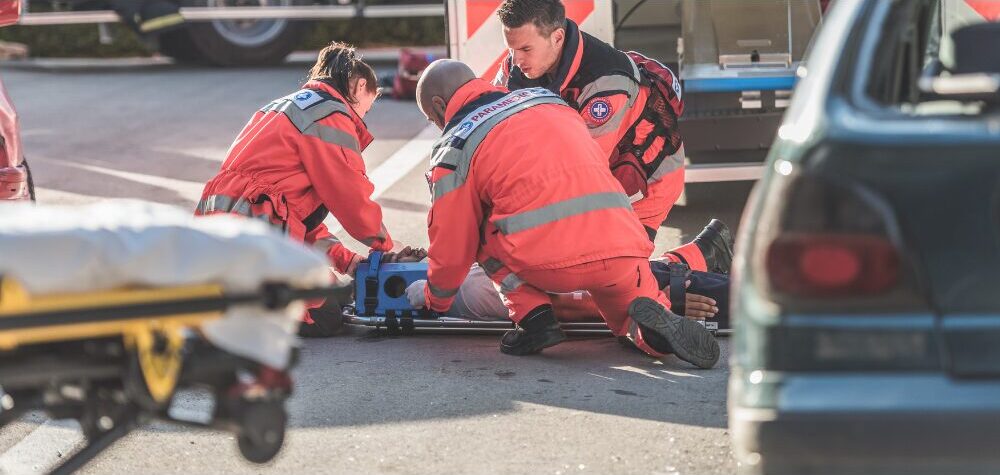
As we “fall back” this Sunday and the sun begins setting an hour earlier each evening, many of us will spend more time driving in the dark during our daily commutes. Unfortunately, nighttime driving brings a higher risk of accidents. Additionally, many of us will find our morning commutes disrupted by glaring sunlight as the sun is lower in the sky in the morning. It is essential to take proactive safety measures that can help you stay alert, visible, and safe on the road this winter.
Why Driving After Dark Is More Dangerous
When Daylight Saving Time ends, driving conditions shift in ways that can increase hazards on the road. Reduced visibility, headlight glare, driver fatigue, wildlife activity, and changing weather all contribute to a higher risk of accidents.
- Reduced Visibility
Once the sun goes down, it becomes harder to see pedestrians, cyclists, and road signs. - Glare from Headlights
Oncoming headlights can temporarily blind drivers, especially if they’re misaligned or overly bright. This glare is particularly dangerous for older drivers and anyone with vision issues. - Driver Fatigue
With earlier sunsets, many drivers feel tired sooner, which can slow reaction times and increase the risk of crashes. - Wildlife on the Roads
Animals are more active at night, especially in rural or wooded areas. Collisions with deer and other wildlife often spike in the fall and winter months. - Weather-Related Visibility Issues
Cooler evenings bring fog, frost, and mist, all of which can reduce visibility and make roads slippery.
Nighttime Driving Safety Tips
It is recommended to take extra precautions as we transition into darker evenings. These simple habits can help prevent serious and often avoidable accidents.
- Improve Your Visibility
- Avoid driving directly toward the setting sun whenever possible.
- Use your headlights correctly. Know when to switch between high and low beams to avoid blinding others.
- Keep your windshield clean and clear. Remove any dirt, bugs, or frost that could obstruct your view.
- Properly Maintain Your Vehicle
- Check your headlights, brake lights, and signals. Replace any burnt-out bulbs immediately.
- Inspect your tires for proper inflation and tread depth to maintain good traction.
- Top off essential fluids and replace worn windshield wipers to ensure maximum visibility and control.
- Drive Defensively
- Increase your following distance to give yourself more time to react.
- Watch for distracted or fatigued drivers who may not be as alert as you are.
- Adjust your speed for nighttime and weather conditions.
- Stay alert and avoid distractions. Never drive drowsy. Always pull over if you feel yourself nodding off.
- Look out for pedestrians and cyclists, especially in residential areas or near crosswalks.
Why Your Morning Commute Becomes More Dangerous
When Daylight Saving Time ends, the sun is lower in the sky during morning commutes. This can cause accidents due to reduced visibility - even if you’re not driving East.
- Reduced Visibility Driving East
With the sun lower in the sky, it becomes harder to see the road ahead, traffic, pedestrians, cyclists, and road signs. - Oncoming Drivers
Westbound drivers need to be on the lookout for drivers heading East who may be blinded by the sun and cross the center line. - Weather-Related Visibility Issues
Cooler mornings can bring fog, frost, and mist, all of which reduce visibility and make roads slippery.
Morning Driving Safety Tips
Glare in the morning is a contributing factor in many accidents. These simple habits can help prevent serious and often avoidable accidents.
- Improve Your Visibility
- Avoid driving directly toward the rising sun whenever possible.
- Keep your windshield clear of streaks. Clear any streaking on the inside or outside of the glass - any streaks will refract the sunlight and make the glare even worse.
- Use your sunshade. The visors in your car can help reduce glare and keep the sun out of your eyes.
- Consider polarized sunglasses. These lenses help immensely with reducing glare and reflections.
- Drive Defensively
- Increase your following distance to give yourself more time to react to anything ahead of you.
- Watch out for black ice. Black ice can easily form overnight or in the early morning with lower temperatures.
- Watch for distracted drivers who may not be as alert as you are, and know they may be struggling to see.
- Adjust your speed to maximise your visibility and improve stopping distance.
- Reduce speed when approaching areas where the sun rises directly ahead or over the roadway.
- Look out for pedestrians and cyclists, especially in residential areas or near crosswalks.
What Should I Do After a Car Accident?
Car accidents can be frightening, especially when they happen at night. The eight steps below are crucial to follow after an accident. Keeping these in mind will help you stay calm and take the right actions, even in a stressful situation.
- Check for injuries and that you and your passengers are okay.
- Pull over to the side of the road if possible.
- Call the police.
- Exchange information with the other driver
- Take pictures of the accident scene
- See if there were witnesses on the scene.
- Contact a personal injury attorney as soon as possible.
- Rest and recover.
To build a strong car accident claim, it’s essential to preserve evidence immediately, including medical records, crash reports, and witness statements. Prompt investigation allows your personal injury attorney to prove the other party’s negligence.
Types of Compensation Available After a Car Accident
If you suffered injuries in a car accident caused by someone else’s negligence, you may be entitled to compensation for:
- Medical expenses and future treatment costs
- Lost wages and loss of earning capacity
- Pain and suffering
- Property damage
- Emotional distress
Car accidents can be complex and overwhelming. In the vulnerable moments after a crash, it’s normal to feel uncertain about what to do next. Working with an experienced car accident attorney can help you protect your rights, pursue justice, and recover the full compensation you deserve.
Contact an Experienced Car Accident Attorney Today
GLP Attorneys has helped thousands of clients with their personal injury accidents for nearly four decades. From highway design and unsafe roadways to car accidents to motorcycle accidents and even wrongful death cases, our experienced personal injury lawyers are here to help you seek justice every step of the way.
If you have been injured, call 800-273-5005 or email our attorneys at to schedule a free lawyer consultation.


